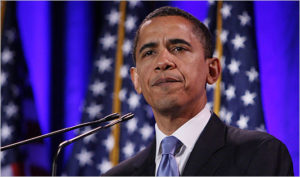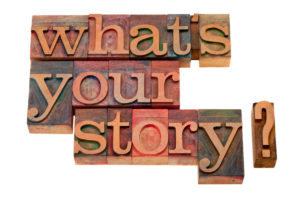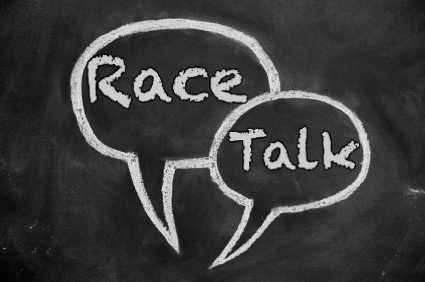A New Conversation on Race
Several years ago, I joined a group called NewCORE, which stands for New Conversations on Race and Ethnicity. NewCORE came into being after then-Senator and presidential candidate Barack Obama delivered the now famous speech, “A More Perfect Union.” In that speech he called Americans to engage in a “new conversation on race.” Picking up on this challenge, Mayor Michael Nutter of Philadelphia, approached a group of pastors and rabbis, as well as the president of Palmer Seminary, and asked them to start such a conversation. Thus, NewCORE came into being and this coming year will celebrate its 10th anniversary.
The purpose of NewCORE, as the name suggests, is to have conversations on race and race-related issues. Over the years our approach has evolved such that at each of our monthly meetings someone is asked to share their personal story, particularly as it relates to their experiences with race. Over my time attending NewCORE, I have probably heard close to a hundred personal stories. Once the storyteller is done, the group asks questions of the speaker to draw out more of their story. The point is not to try to promote our point of view, but rather to learn more of the speaker’s perspective. We have had people of all races and ethnicities, ages and backgrounds share their story, and we are always richer for it. Moreover, we have begun taking this approach to race-related conversations into schools and community settings, and our personal relationships.
My experience with NewCORE has taught me the value of personal storytelling, and how it can take us places where debate and diatribe never will. So, as we think about how do we talk with white folks about race, we need to think in terms of letting others tell the personal story that led them to think, believe, and act as they do; and if asked, we need to be prepared to share our story as well. As the other person shares their story, our first job should be to listen and then to ask questions that probe and explore that experience further.
Caveats About Change
Before I say more about storytelling, I want to offer a couple of caveats. The first caveat is that we cannot make another person change their perspective or attitude, only they can. One of the reasons we want to have these conversations with our white friends, co-workers, and family members is because we want them to be more open to a point of view that supports racial justice. However, change does not happen in others because we want them to change; change only happens when persons themselves are motivated to change. We cannot make anyone change. All we can do is provide a context that is open to dialogue and personal exploration.
Sometimes people will resist the invitation to share their stories. Generally, I have found that race is a “taboo” topic among most white groups. With younger folks there seems to be a bit more openness, because the Millennial generation has had more inter-racial/ethnic contact. However, even with younger folks one can meet resistance or even hostility at the invitation to talk about race (I will say more about this in a future blog in this series). If the door seems closed, then back off the topic, but not the relationship. Don’t be afraid to bring up again. Sometimes the strongest defensiveness can be a sign that a person is struggling and may be open at a later time.
The second caveat is that change takes a long time to happen. One of the reasons I suggested in my last entry that we start with ourselves, is so we remember how long it has taken us to get to our current way of thinking, and how much further we have to go (Note: that is why I call myself a “recovering racist”). For that reason, we usually cannot expect a dramatic transformation in one conversation or encounter; change takes a long time. This is frustrating, but it is reality. Our role may be only to nudge a person down the road a piece toward greater openness. We may never see the full transformation, and we may never know the impact of our example and words. We are part of a process, and as we have opportunity we should participate in it, as long as it seems to take.
Telling One’s Race Story
 Now back to storytelling and listening. One of the ways I try to begin these type of conversations is to ask folks to tell their “race story.” When I lead a group on the topic of race and racism, I will often start with a series of simple questions:
Now back to storytelling and listening. One of the ways I try to begin these type of conversations is to ask folks to tell their “race story.” When I lead a group on the topic of race and racism, I will often start with a series of simple questions:
- When was the first time you became aware of race?
- When was the first time you remember experiencing or witnessing racism? What was that like for you?
- What were the messages – both spoken and unspoken – you received about people of different races by the significant adults – parents, teachers, mentors, etc.- in your life?
- How have your thoughts and feelings about racism changed or developed over time?
If the conversation is prompted by a hot-button issue like Charlottesville or the Trayvon Martin case, instead of debating who is right or wrong, step back and try to shift the topic to how they came to think about people of color and the nature of racism? What messages were they given growing up? What experiences have shaped their views?
Active Listening
When we ask these sort of questions, we must engage in what is called active listening. Active listening involves listening to understand not only the words, but more importantly the emotions beneath those words. It is listening to connect with that person, not to debunk their interpretations of events or misguided ideas. This kind of listening not only requires effort, but it will often put us in the place of hearing things that cause us to feel angry and upset. It requires significant emotional intelligence and self-regulation.
In addition listening to understand, we are also listening for shared values and beliefs. Those shared values provide a bridge for finding common ground. That common ground becomes a place to affirm the other, while also sharing how that value is perverted or denied certain people. For instance, we might share with the other person the idea that all people should have an equal opportunity to succeed in life. That then raises the question as to whether underfunded schools in low income communities of color provide the same opportunity for educational advancement as it does for white kids in the suburbs. The value become the focus to understanding the issue, not a particular position.
We also should be prepared to share our own race stories. Using the questions I posed above, we need to be able to clearly and succinctly share how we came to think about race the way we do. This approach I think  is particularly effective with family members and close friends, people who care about us, have known us for a while and even shared some of the same experiences, just with different interpretations. To do so openly and honestly is to risk vulnerability and to admit our own struggles. The hope in doing so is to invite people into our story, and perhaps re-evaluate theirs.
is particularly effective with family members and close friends, people who care about us, have known us for a while and even shared some of the same experiences, just with different interpretations. To do so openly and honestly is to risk vulnerability and to admit our own struggles. The hope in doing so is to invite people into our story, and perhaps re-evaluate theirs.
Now because we are engaging in an interpersonal dialogue, we should be prepared to hear things that upset us and confuse us; and challenge us to reflect on our positions. We may be asked questions we can’t answer and presented challenges we don’t know how to respond to. We may have to think through our positions more deeply. However, the payoff is a relationship where one can talk about race openly, which in itself is a major step for many white folks.
Only the Beginning
Now telling our story is not the sum total of everything one can say on talking with white folks about race. In future segments of this series, I will address some of the major barriers that people often bring up, and I will try to address some of the false myths about history and perspectives that often cloud the conversation. In one segment I will speak to the issue of Black Lives Matter, which is often something these days white people want to take issue with. So, there is much more to do, but storytelling can get us started.
Now there is no simple formula for having conversations about race. Each person and each conversation is unique. You may come up with different or better questions to begin the storytelling process. However, in my experience storytelling and active listening has been key.
When I was in college, one of my roommates was openly negative in his comments about African Americans. When I asked him why, he told me that in high school he had been beaten up by two black guys in the high school bathroom, and ever since he had hated blacks (although he used a much more derogatory word). It turned out that he played on the football team with several African Americans, and at the time his sister was dating and African- American. A common value we shared was basic fairness and decency toward others. I tried to point out that there were more positive examples he could point to, and he didn’t need to blame the whole group because of the actions of two people. He listened and then the conversation ended and was not picked up again. I don’t know how that roommate thinks about these issues today, but my hope is that I may have started a process by listening and honoring a person’s story, and then taking the underlying issues in that story to offer him another way.
That is what we hope for. Folks of European descent have over a 600-year history of explicitly thinking of non-Europeans in a derogatory and sub-human manner. We have come a long way in those six centuries, but as recent events remind us, we still have a long way to go. We should not discount that history, nor should we ignore it. Yet, with faithful tenacity, and openness, we can begin to move our collective story in a more inclusive and just direction.


